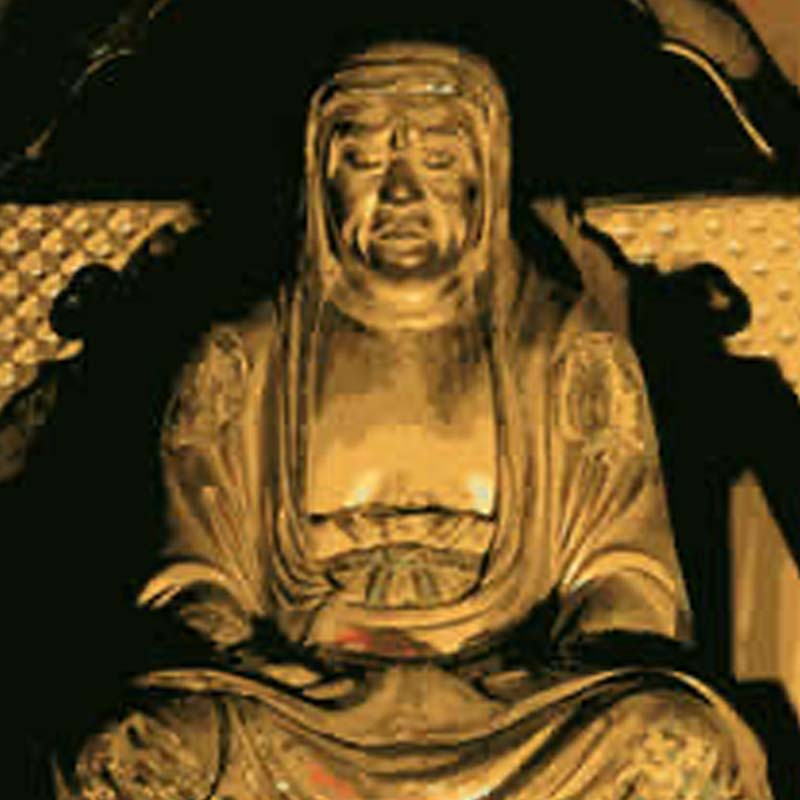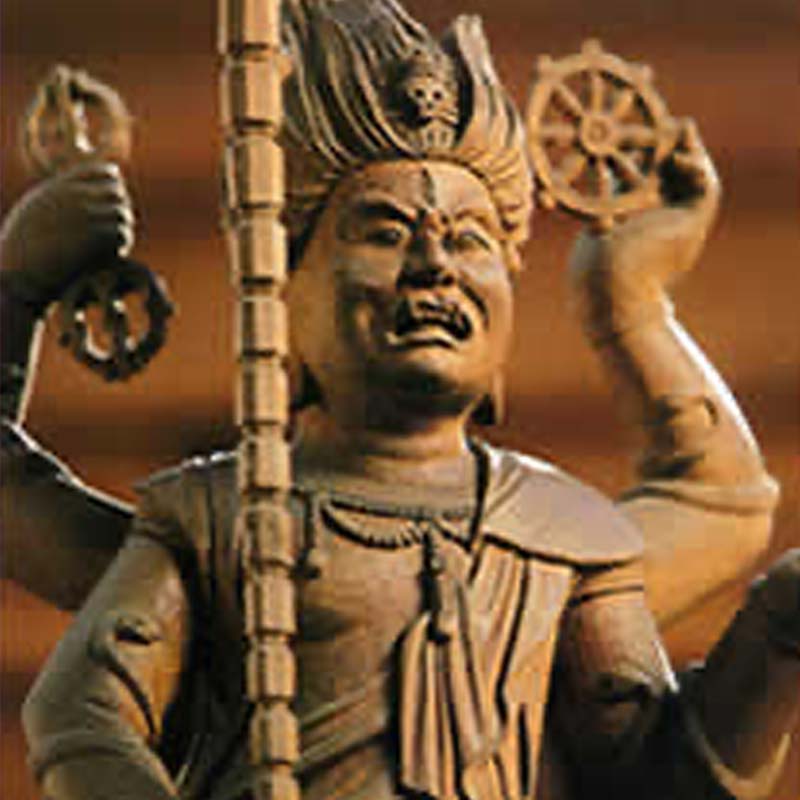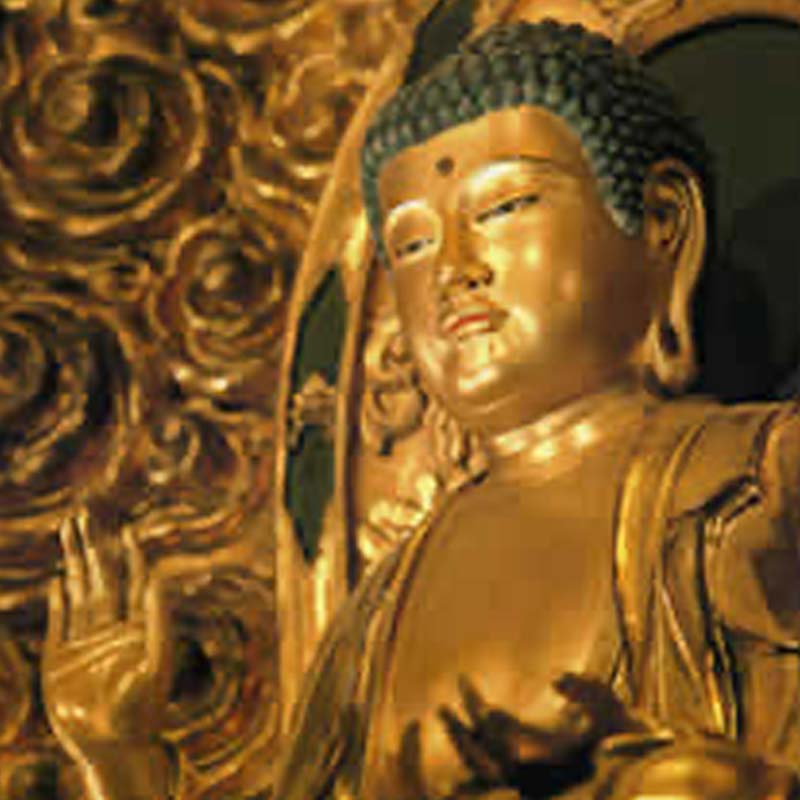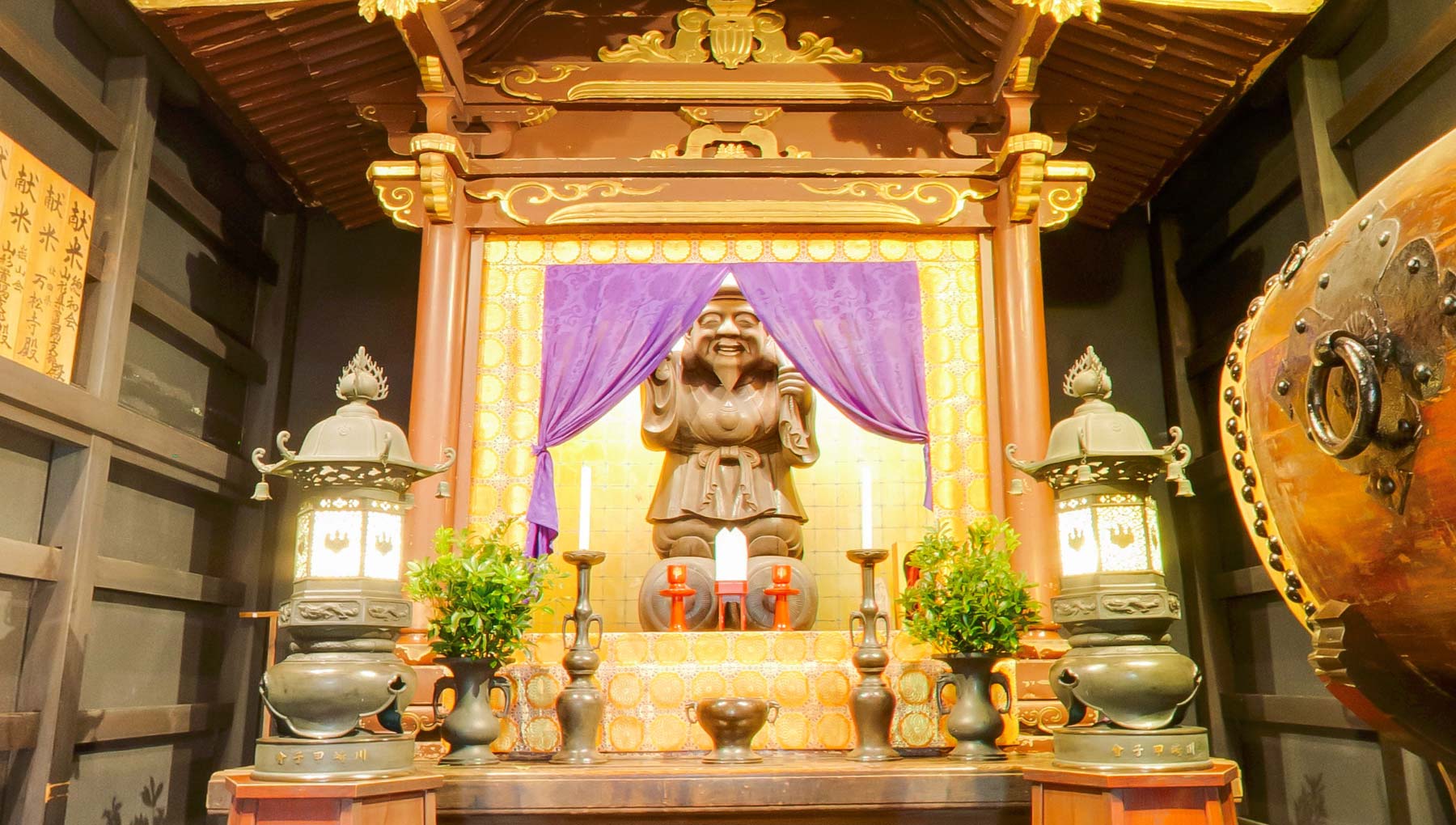Bodhi dharma / Buddha Hall

There are many stories of Bodhi dharma (dates and places of the birth and death are unknown), the founder of Zen Buddhism in China, the biography of Southern Zen districts was inherited from the dharma in India. In B.C. 527 he sailed to China and audited the Emperor Wu of Liang and had Zen Dialogs with him. But they did not agree and he left there in silence and traveled on a Carrizo leaf through Yangtze River to Luoyang of Cao Wei. Then at Shaolin Monastery, he spent 9 years for Zen-contemplation and at the same time he taught Huìkě the second founder of Zen.
Memorial Service of Bodhi dharma is held here on October 5th every year.
The Wisdom King Ucchusma (Ususama myōō)

The bodhisattva is to awake one’s own pureness and it is said to protect the washing room in Zen Buddhism and esoteric Buddhism. The Ucchusma statue is enshrined here. The well-known writer of Buddhism, Mujyu Dokyou(1226-1312) wrote in “zōdanshū” chapter of “shasekishū”, that it is also the incarnation of Acalanatha (the god of fire).
The appearance is sometimes different but mostly the eyes are red, the body black and 4 arms indicate anger. The whole profile is surrounded by flames, especially its hair. This is called Katō Kongō (head blaze Keumkang).
Buddha Syakyamuni (Shakamunibutsu)

In the Buddha hall (Butsuden) which is located at the center of the 7 halls, the Buddha statue is enshrined in the center on a stage with 2 flanking attendants, one Mahā-ka-śyapa(Kashōsonja) on the right and Ānanda on the left, generally called the “3 Buddhas”.
Buddha was born between the King Suddhodana and Queen Maya of Shaka Kingdom. Shakamuni means a saint raised in Shaka Kingdom. He started the trip for enlightenment at the age of 29, leaving his father king, wife and children. He reached enlightenment at the age of 35 under the linden tree of Bodh Gaya, in the Bihar district, India and preached 45 years until the age of 80. It is said that his disciples reached the number of 1250.
On December 8th every year, we hold a ceremony of the enlightenment of Buddha (Jōdōe).
